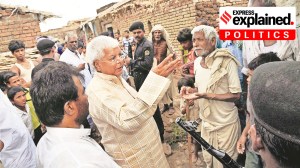Drama Queen
Zohra Segals memoir bustles with characters entering and exiting the stage over a century
Zohra Segals memoir Close-Up is the story of a hundred years not of solitude but of a journey bustling with several characters,on the stage and off it. There is also some sideways look at people who shaped the twentieth century,like a reference to Jawaharlal Nehrus arrest in 1942,a day before he was to host a dinner for the newlywed Segal couple at his home in Allahabad.
Its a spirited account,almost like a screenplay,written with a sense of abandon. There are some exotic details from her genealogy (of one of her ancestors participating in the Revolt of 1857 and another being responsible for the gouging out of the eyes of the dispossessed Mughal king Shah Alam II),but mostly the book is about the twists and turns in her life. And the narration,although detailed,is neither boring nor self-indulgently wordy.
In Close-Up,you get to look inside the home of a woman artist in mid-20th century India. Segal is forthright as she talks of how she decided to marry Kameshwar Segal,many years her junior,and how Allahabad was where a Hindu could marry a Muslim in the year of Quit India in a bungalow on loan from Indira Gandhis in-laws. The candour is remarkably sustained in her account of Kameshwars depression and his occasional conflicts with her success and the praise her looks and talent received,despite the encouragement he gave her throughout his life. There is a particularly moving incident when he,while shooting her dance,left tear stains on the viewfinder. Segal says Kameshwars suicide destroyed her life and broke her spirit for many years,but it also gave her the biggest gift she could ask for as an actor the memory of a great pain,that whenever she needed to act out a part that portrayed deep anguish she simply needed to revisit those days and she would instantly get the right touch on stage.
Close-Up is also about Indian theatre Uday Shankar,Prithviraj Kapoor and IPTA,the last looked at not through the lens of ideology,but as an artist in the fray.
Something that quite inevitably runs through the book is a sense of history,traversing as it does a momentous century. Sometimes one forgets Segal is as old as she is,98,only to be reminded of it suddenly when she contrasts Germany before and after World War II (and how her memories of Dresden before 1933,when she stayed there,made her most despondent in the years following the War).
The last few years of the 20th century do not get as much space in the book as her salad years do. Still the chapter 1976-1996: The Last Decades offers an insight into working in India as an older person,and as an older woman-artist. Segal continued to live life to the lees,as she did a whole lot of television and films,but she does mention the difficulty of finding a part as an older woman: Very few stories have an ageing character so the chances of my getting a lot of work are slim unless someone writes a role for me,as was done in Tandoori Nights,Never Say Die,Partition,Down Every Street,etc. Am I disheartened? Yes and no .
Zohra Segal concludes that despite not getting her desserts,she wouldnt have it any other way. For the rest of us,her easy-to-read account is a joyous treat.





- 01
- 02
- 03
- 04
- 05


























